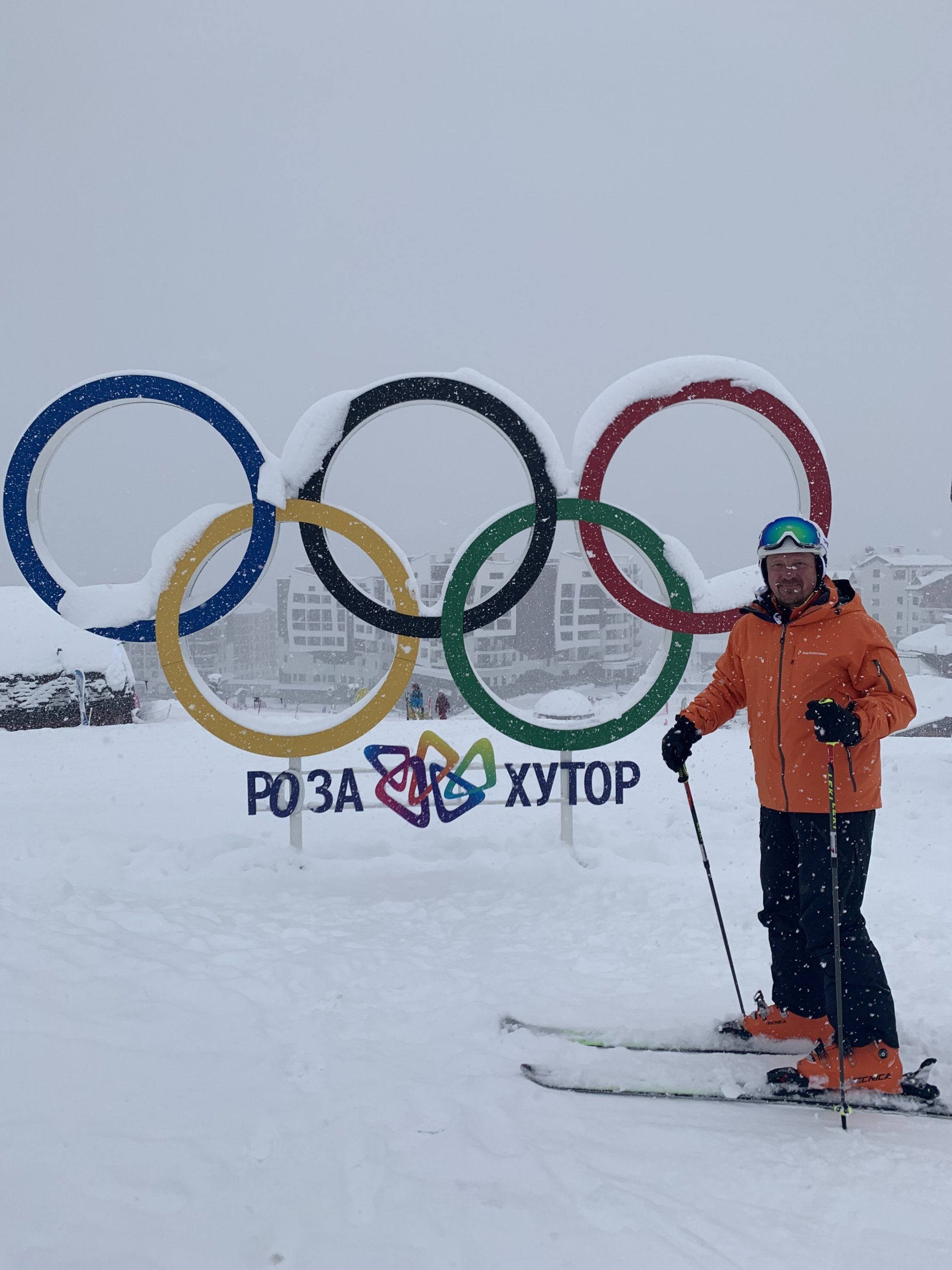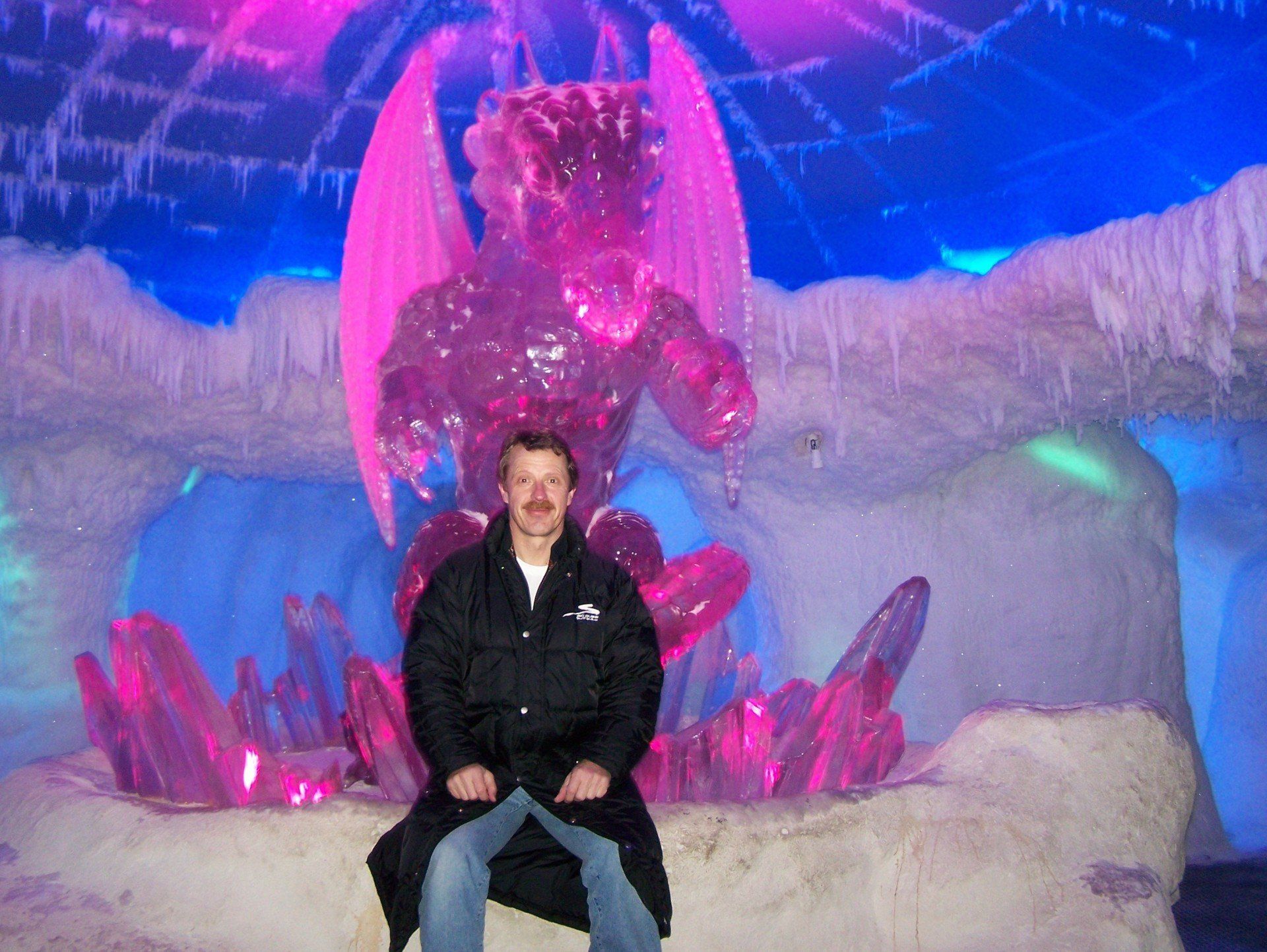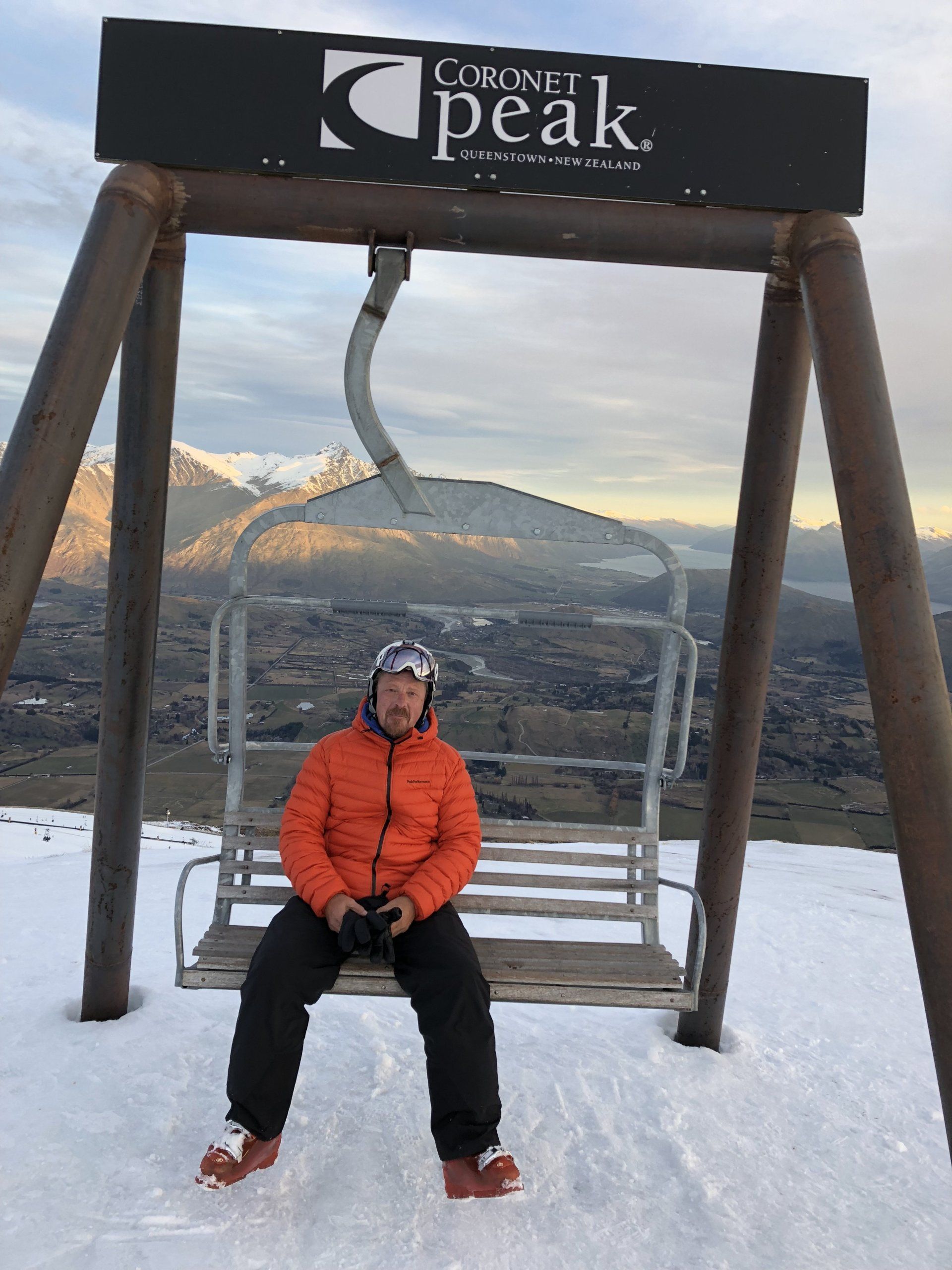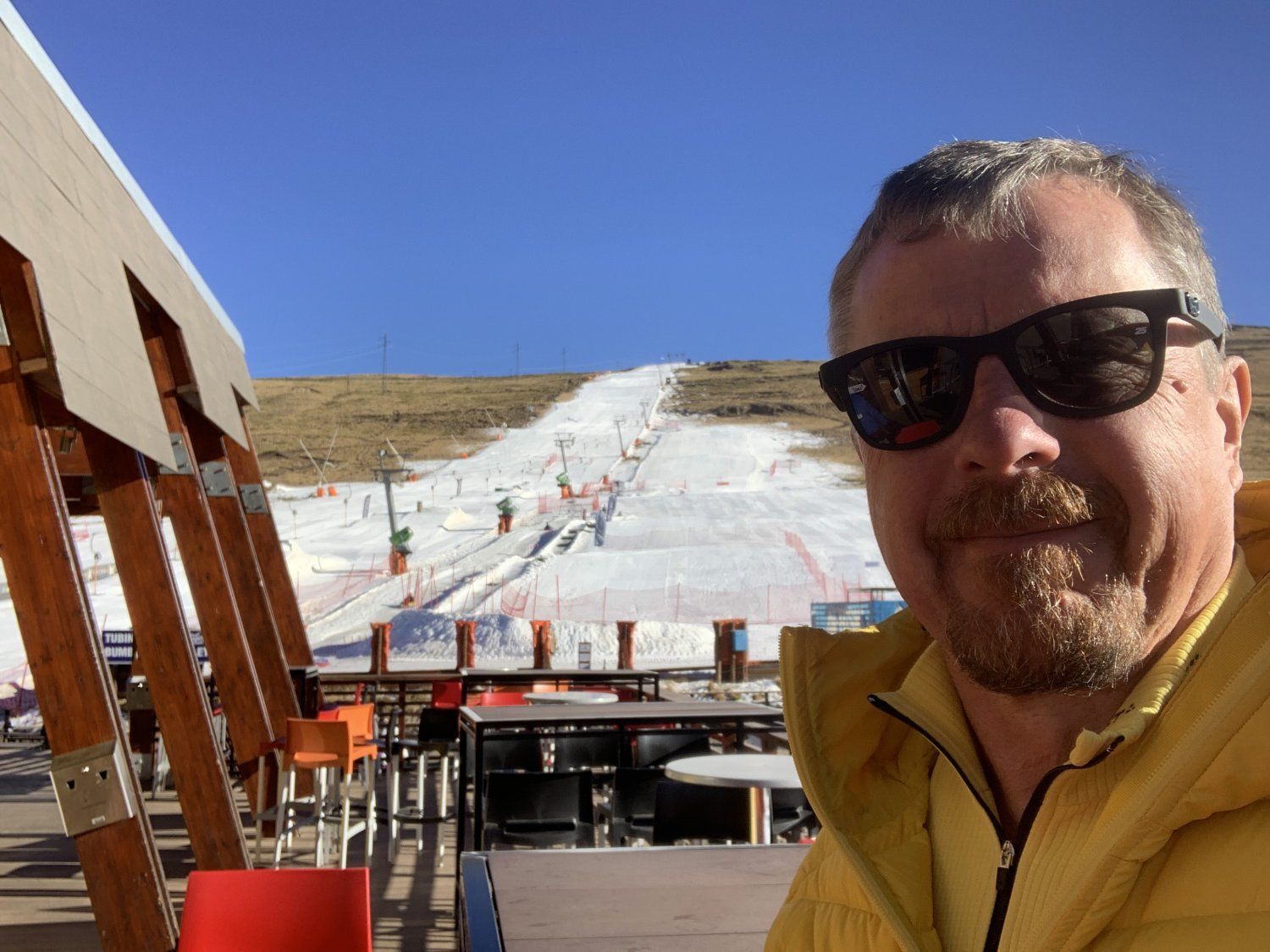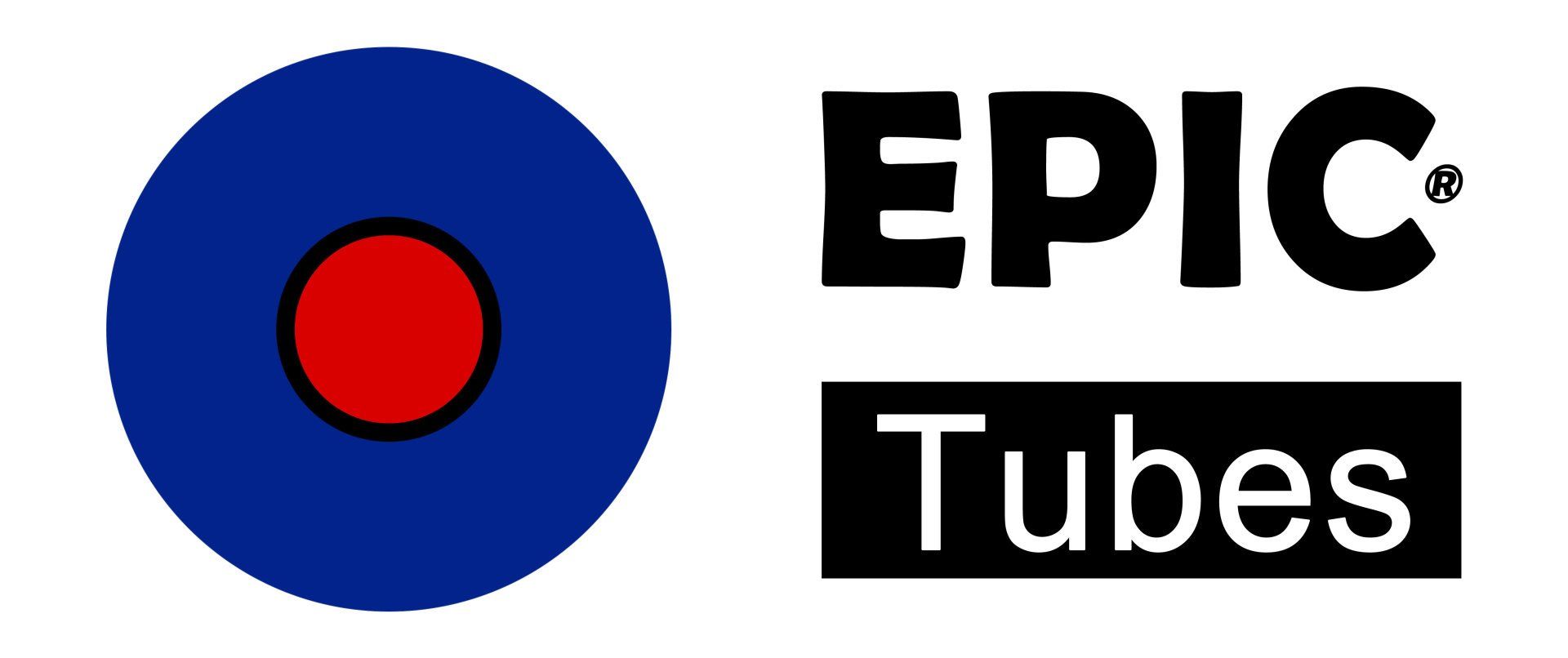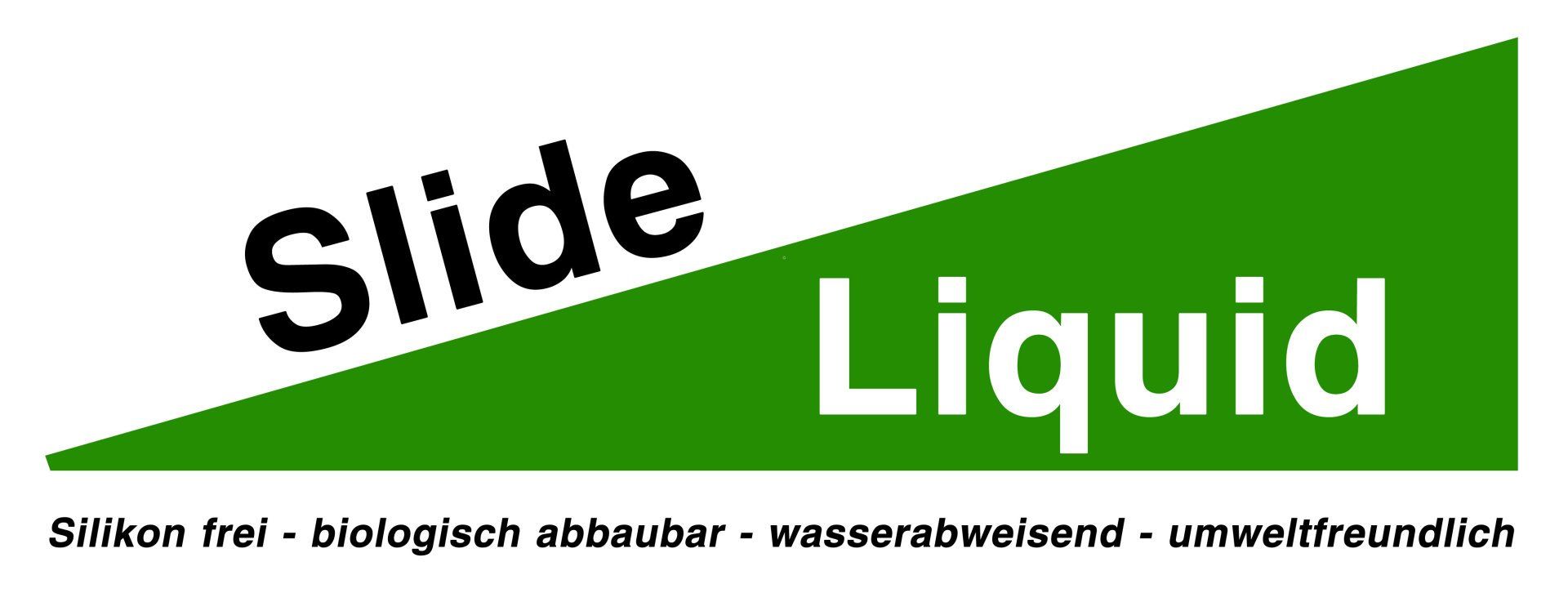ABOUT US - WITH US
The continuity of progress cannot be stopped, only not everyone participates in it because many lack an overview of what is feasible and the will to want and be able to shape the future.
But it works - if you want!
Story
The owner Wolfgang HP Schmidt has been active in marketing & sales & training for over 40 years. In addition to studying economics and business administration in Paderborn and Bielefeld, he was able to make a significant contribution to the great sales success of the ski manufacturer Hagan in Germany. He also completed a sports degree at the Technical University of Munich. 1985 was the grand finale with the degree in business administration and sports instructor (state certified ski instructor). In addition, I graduated as a trainer and instructor for ski instructors at the German Ski Association.
As an expert in the winter sports industry, he held managerial positions at Sergio Tacchini, Snowtime 365 AG, Olin & Track & Kneissl GmbH, Hagan Ski GmbH and Feratel AG and was able to successfully manage and expand the business.
Licenses
Corporations
As an expert in the winter sports industry, he held managerial positions at Sergio Tacchini, Snowtime 365 AG, Olin & Track & Kneissl GmbH, Hagan Ski GmbH and Feratel AG and was able to successfully manage and expand the business.
Licenses
The further development as a licensing and merchandising expert is based on the licensing sales management within the Kirch Group (Merchandising Munich) in the 1990s. The Europe-wide marketing of actors (including David Hasselhoff, Terence Hill, Gerhard Lippert), films and TV productions from almost all Hollywood studios (including Universal, Fox, Lucas Film, Warner Brothers, Marvel) and affiliated TV stations (including DSF, Sport1 , SAT1, Kabelkanal, Pro7) in various product segments. Great marketing successes were, for example, the Europe-wide positioning and licensing of films such as Jurassik Park, Batman, Indiana Jones, Soccer World Cup 1994, Looney tunes, Simpsons, but also successes with Bergdoktor, Nils Holgersson, Maya the Bee and many more
Corporations
Another step forward was the takeover of the management board Licensing Central Europe of the world's leading toy company Hasbro, based in London. With classics such as Sindy, Monopoly, Action man, Trival Pursuit and Cluedo, the company received the international award of the industry association LIMA (International License Association) as "License Agency Of The Year" for the first time! In addition, there was the development of the ideas of a Monopoly competition with the advertising agency "Heye & Partner" for McDonalds. Later this advertising campaign became a worldwide success.
With the development of the franchise concept of the first German sporting goods discounter Sport Fundgrube, this company was able to establish itself as the market leader in specialist sports retail in Germany and other countries within a few years. As a specialist in brand development and targeted positioning of registered brands such as Maybach, Snowtime, Laola and Simsen, over Years of extraordinary success have been recorded.
Climate change
Climate change
At an early stage he dealt with climate change, the globalization of winter sports, the winter sports industry and exploding global tourism. Due to the steady growth of the middle class in the emerging countries, the need for active leisure activities, including the demand for offers of winter sports in these countries - even without snow. With the self-developed Skitrax plastic mat, a kind of "artificial snow surface", alpine skiing, ski jumping, cross-country skiing and tubing (Tubtrax) can also be carried out without snow. From now on, places dedicated to winter sports could also offer these activities in summer. In addition, there was snow tubing in summer and karts, which can slide and drift on the mats as if on ice in summer.
production
production
With a production "Made in Germany", further production facilities abroad, the international trademark rights, patents and a worldwide sales team, an international marketing was consistently implemented. With offices, agents, importers and our own exhibition stands on 6 continents, we are right on the pulse of changes, international innovations and trends in the tourism sector and leisure facilities.
With the subsidiary "Schneestation", we run a media agency that has been reporting on international winter sports events on site for over 25 years.
A lot of professional experience, always good ideas, flexible, future-oriented thinking - that's what we offer our customers.
The 1960 years. . . .
When the founder of the company, Wolfgang HP Schmidt, started swimming over 60 years ago in his native Osnabrück, there was only one old swimming pool from the 1920s with the corresponding functional flair of a dark swimming pool, showers and changing rooms.
Nobody thought about it then,
that there are sometimes large leisure pools with a wave pool and giant slides, extensive SPA facilities with palm trees and beach bars in the pool where cocktails are served. It was a good thing, because he could concentrate fully on competitive swimming.
The 1970s. . . .
When he experienced his first attempts on skis lying down rather than standing in the mid-1970s, these attempts were made on 2.15m long wooden skis with strap bindings. There were already wooden skis with plastic elements and safety bindings with lanyards, but that was not yet known to the general public and, if so, not affordable.
At that time nobody thought
sometimes to ski with only 1.70cm (or even shorter), which offer a construction with carbon fibers in the embroidery process, where the fiber orientation and thickness are aligned according to the functional requirements at the respective point of the ski. We are talking about a noticeably precise power transmission with minimal effort, with which the ski can be controlled lively and dynamically.
The 1980-2000s. . . .
Many places in mountain regions of the Alps, Rocky Mountains and other mountain regions around the world had a thick layer of snow in the 1960s and 1980s, sometimes from November to May. The decision of many mountain villages to position themselves primarily as winter sports locations has given these places a lot of tourism (and wealth).
Summer tourism usually only started at the end of June, when the summer holidays began in other countries. The hotels and restaurants opened, the mountain landscape was there anyway, the hiking trails expanded and apart from “Mei is des shee here!” Little was offered. Why should it, because many hotels will close again in September in order to fully prepare for the coming winter sport. The summer months were also used to renovate or build new hotels or restaurants, as well as to build new gondolas or chairlifts - after all, that was how money was made in winter. From our own experience, the only problem facing the major tourism operators in “Hot Spot Winter Vacation Regions” in the 1980s was that the new sports car was just around the corner in May.
Summer tourism usually only started at the end of June, when the summer holidays began in other countries. The hotels and restaurants opened, the mountain landscape was there anyway, the hiking trails expanded and apart from “Mei is des shee here!” Little was offered. Why should it, because many hotels will close again in September in order to fully prepare for the coming winter sport. The summer months were also used to renovate or build new hotels or restaurants, as well as to build new gondolas or chairlifts - after all, that was how money was made in winter. From our own experience, the only problem facing the major tourism operators in “Hot Spot Winter Vacation Regions” in the 1980s was that the new sports car was just around the corner in May.
In the 1990s and 2000s, the capacities of the mountain railways in the Alpine regions were massively expanded. With the installation of many new snow-making systems in small and large ski areas, the number of winter sports guests also exploded, which in turn prompted the hotels to significantly expand their hotel capacities.
It was always uphill. If a hotel in the ski area was decorated with 3 stars in the 80s, it now has at least 4 stars with expanded capacities and offers. This includes more high-quality rooms (suites, lodges etc.) a large SPA area and “of course” a high-quality restaurant with a toque chef. The massive expansion of ski equipment rental also increased the convenience and comfort on arrival and departure.
Nobody thought about it thenhow climate change will disrupt this profitable business model. Only a few tourist offices and mountain railway owners thought of the constant expansion of quality in summer tourism 10-20 years ago. St. Anton am Arlberg is an example. Since the hotels are only open to a limited extent in summer, advertising for summer tourism also makes little sense. The predominant assumption was that the pragmatic thinking on the “cash cow” of winter sports would continue to provide us with artificial snow for white ski slopes from early winter to spring from the modern snowmaking systems. This recipe now has an expiration date.
The 2010s. . . .
This recipe no longer applies to ski areas below 1000m. Since the mid-1990s, nothing has worked in ski areas without artificial snow. Only through the constant expansion of the snow-making systems is winter sports still possible in the ski areas around / from 400m above sea level from mid / late December to around March.
Winter sports resorts below this magical limit have been struggling with too little artificial snow for years because it was far too warm for their production (it must be around 0 to -1 degrees, with low humidity). For a few years now, the months for sufficient winter sports have only been limited to January and February / March - if at all.
Glacier ski areas are (still) excluded. But here “snow farming” is already being carried out at great heights, where the remains of snow from the old season serve as the basis for the start of the next winter season. More and more ski areas in lower regions are using “snow farming” in order to be able to present a good white snow surface in the valley at least for the start of the season before Christmas. Amazingly, with this method only about 20% of the total stored and covered snow surface melts over the warm summer months.
Nobody thought about it thenthat the cold winter is shortened to 3-5 months, the warm summer is extended to 5-7 months - for the time being, because global warming is only just beginning. Sports and consumer habits there are also changing accordingly. This development presents pure winter sports locations with new challenges - with the question, what do we do now (more or differently) in summer? Do what differently, what more or less offer, because old target groups break away, what new target groups are there? How are new target groups addressed?
The 2020s. . . .
Hiking, biking, delicious food, great and what else? How quickly will new summer tourism surely change? Is the old target group still relevant for us? What do the new target groups want and where are they? 30% of the guests in the gondolas in winter are already occupied by non-skiers, i.e. people who only want to go to the mountain station and the restaurant there!
Do these guests only come in winter or would they also come to us in summer? Which attractions for the locations can be used in winter and summer? What do foreign tourists prefer, e.g. from China, India, Dubai?
Do these guests only come in winter or would they also come to us in summer? Which attractions for the locations can be used in winter and summer? What do foreign tourists prefer, e.g. from China, India, Dubai?
The state of Tyrol is one of the positive pioneers of attractive summer tourism. Growth rates of 5-10% per year for the last 15 years in winter tourism were normal. Since around 2017, the share of summer tourism has been around 55% - with an upward trend. South Tyrol has also reacted to the shift in trend “dare more summer” and successfully changed the direction of tourism.
Other winter sports-oriented countries have mostly recognized the importance of summer tourism, only the right implementation is still lacking. Due to climate change, we are also experiencing a shift in tourist flows.
Other winter sports-oriented countries have mostly recognized the importance of summer tourism, only the right implementation is still lacking. Due to climate change, we are also experiencing a shift in tourist flows.
Nobody thought about it thenthat one virus could change a whole world in a matter of months. “Yes, it can!” Because of the corona virus and the sometimes unreasonable handling of the pandemic, global tourism is now down and looking up with its head and wondering how things will continue now, will things continue differently?
“Always further, always higher” was a massive blow. Globalization break is announced. But what does that mean? No going back to Ballermann Tourism? Is cheap production in China now disappearing? Does Europe offer an alternative? Have people changed nationally and globally? Why should you have changed? Should the old hotspots Sölden and Ischgl reposition themselves more modestly or was the Corona Virus the best international advertisement for these places? Bad news are good news !?
“Always further, always higher” was a massive blow. Globalization break is announced. But what does that mean? No going back to Ballermann Tourism? Is cheap production in China now disappearing? Does Europe offer an alternative? Have people changed nationally and globally? Why should you have changed? Should the old hotspots Sölden and Ischgl reposition themselves more modestly or was the Corona Virus the best international advertisement for these places? Bad news are good news !?
We deal with the answers and advise you on individual solutions.








